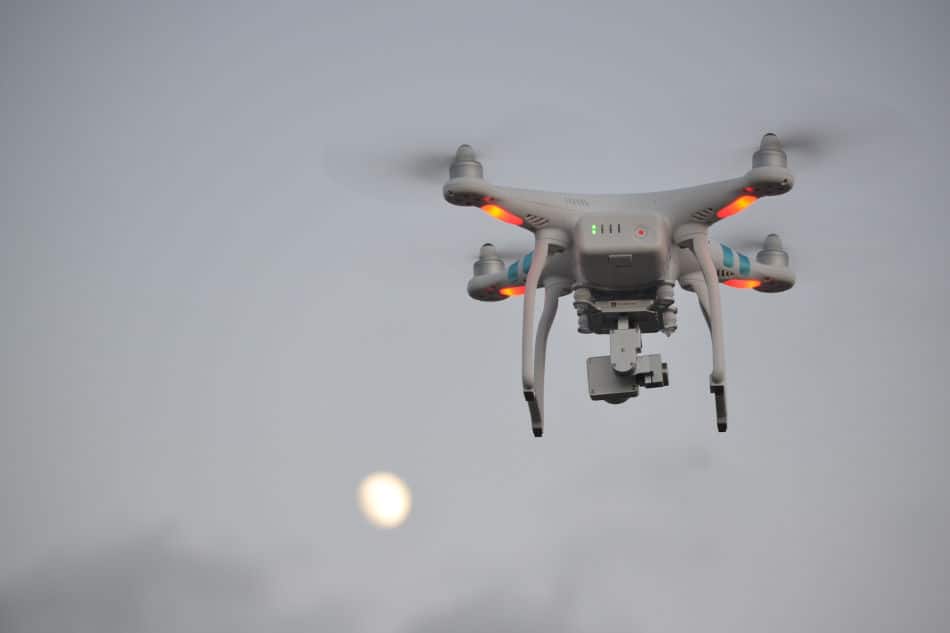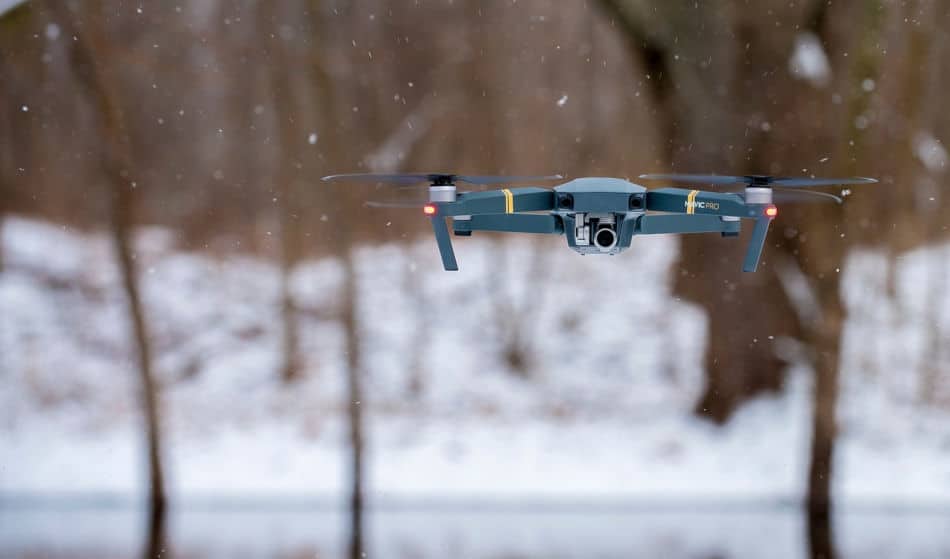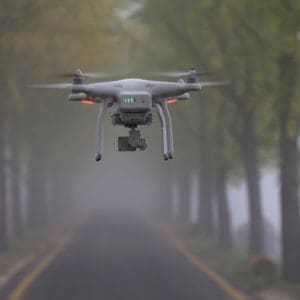Yesterday I wanted to fly my quadcopter drone, but it was raining a bit. I wondered if I could still fly it. I didn’t want to damage or crash my drone, so I did some research and testing to find out. Here is what I found.
Is it possible to fly a drone in rain? Generally, drones cannot fly in rain, because drones are neither water-resistant nor waterproof. But there are some drone systems with different stages of water resistance. The critical parts are the motor and the electrical components.
Many pilots try to test the technical possibilities of their drone in the rain. There are many things to consider when you want to fly in the rain or even just humid conditions, whether or not the drone is already wet or will get wet.
What happens when a drone flies in rain?
Unfortunately, bad weather, like rain, high humidity, snowfall, or fog, is one of the most common reasons to crash or lose a drone. The water from rain and fog causes a short circuit in the electrical components. Even if the drone just lands in wet grass, it may short circuit.
The design determines how sensitively the drone reacts to water. Some have large air vents for the flight control, and sometimes the water can directly penetrate the copper windings in the electric motor.
If the water flows to the receiver or to the flight control and connects the + and – poles, unwanted control signals can occur, making the drone uncontrollable. If the water directly hits the power distribution board, the electric motor, or the controller, a short circuit with the high current of the battery will occur. This short circuit can lead to the melting of cables, burn components on circuit boards, or weld together the rotor and the stator of the motor.

Most commercially available drones are protected by a housing. The design of this case and the tightness determine whether the drone can come into contact with water, rain, humidity, or fog. A common standard to classify the resistance of a product against dust and water is the IP code (International Protection Marking) of the IEC standard 60529.
Look in the description of your drone: There might be an IP code in it. That code normally has two numbers after the “IP.” The first number indicates the solid-particle protection and the second the liquid-ingress protection. For example, IP65 stands for dust-tight (6) and protected against water jets (5). The letter X signifies that insufficient data has been gathered to assign a protection level. For example, IPX4 would mean the drone is protected against spraying water (4), but no data on the protection against dust has been collected.
The tables below summarize all codes.
| Solid-particle protection | |
| Level sized | Effective against |
| 0 | — |
| 1 | >50 mm (>~2 inch) |
| 2 | >12.5 mm (>~0.5 inch) |
| 3 | >2.5 mm (>~0.1 inch) |
| 4 | >1 mm (>~ 40 thou) |
| 5 | Dust-protected |
| 6 | Dust-tight |
Liquid-ingress protection | |
| Level | Protection against |
| 0 | None |
| 1 | Dripping water |
| 2 | Dripping water when tilted at 15° |
| 3 | Spraying water |
| 4 | Water splashes |
| 5 | Water jets |
| 6 | Powerful water jets |
| 7 | Immersion, up to 1 m depth (<3.3 foot) |
| 8 | Immersion, 1 m or more depth (>3.3 foot) |
For more information on IP codes, click here.
Generally, a distinction is made between water-resistant and waterproof drones.
By definition, something that is waterproof does not let water pass through it. Waterproof drones can be totally submerged in water and can fly over water or in rain. Some such drones can make short “flights” beneath the surface of water. So, you can use such drones on your sailing trip or when canyoning or swimming. Such drones have the IP code IPX7 or IPX8.
Conversely, something that is water-resistant repels water for a short time but is not thoroughly waterproof. So, if there is a light rain during your drone flight, it is no problem to fly home smoothly. But keep in mind that the water, fog, or snow should not penetrate your drone for a long time. If you have snow on it, blow it off directly after landing away before it melts. Such drones have an IP code between IPX3 and IPX6.

Is my drone waterproof or water-resistant?
First, look at the manual of your drone. Normally, whether it can fly in the rain or land on water is written in the “FLIGHT” chapter under “FLIGHT CONDITIONS.” Most water-resistant or waterproof drones have an exact description of what you can do and provide tips to land or take off from water.
If no IP code is provided in the manual, you can also try to find an IP code directly on your drone.
Even if you have a water-resistant or waterproof drone, make sure not to expose the battery to rain or water.
What should I do if my drone crashes into water or gets wet?
Usually when something like this happens, it happens unexpectedly and fast. A short rain shower may occur out of nowhere, or an empty battery may send your drone falling into the lake or sea. Either way, the drone is wet, so what can you do now? Here are three easy steps to follow after your drone come into contact with water.
Step 1: The most important thing to do after your drone has come into contact with water is to disconnect the power supply of the drone immediately.
Step 2: If your drone has come into contact with a lot of water, try to get it out of the case. Move, turn, and gently shake your drone in every direction so that the water can get out of it.
Step 3: Take a black plastic trash bag (better sunbeam absorption) and fill it with some salt. The ideal amount of salt depends on the size of the drone and how much water is still in it. A good guideline is the size of the drone about 3-4 mm thick. Now look for a warm, sunny, and flat surface, place the drone carefully on the salt carpet in the plastic bag, and seal it. After two days in the sun, the salt will absorb the remaining water in the drone.
Which other problems can occur when flying in the rain?
Short circuits are not the only reason why drones crash. Raindrops on the drone disturb the flight characteristics. Especially with fixed-wing drones, too much water on the wings can lead to a stall. With rotating wings like on a quadcopter, this effect is not that strong, but don’t underestimate the weight of water on the surface if your drone doesn’t have enough power.
Not every rain is a warm, light summer rain. Often, it is accompanied by wind and turbulence, which can lead to uncontrolled flight conditions for the drone. Learn more about this topic right here: “Can drones fly when it is windy?”
Another important point when flying in the rain is visibility. Always try to keep the drone in sight. If you lose sight of the drone, use the “Come Home Button” immediately.
Can I fly my drone when it’s snowing?

Generally, it’s no problem to fly a drone when it’s snowing. Make sure that the drone is free from snow before starting, and clean the drone from the snow immediately after landing before the snow melts. Be careful when handling the battery in the snow, and use a contact protection for the connections.
Can drones fly in cold weather?
Yes, they can! The only thing to consider is the temperature for the battery. LiPos generally works at temperatures between -20°C (-4°F) to 40°C (104°F). The recommended temperature is about 15°C (60°F). The capacity of the battery and therefore the flight time decreases drastically at temperatures under 2°C (36°F). The solution is to use a LiPo battery warmer and fly fast so that your battery stays warm.
What happens when lightning strikes a drone?
The components burn, and the drone crashes. Tom Scott and the University of Manchester’s High Voltage Laboratory conducted some tests to this end, but it was not possible to protect a DJI Phantom 3 against lightning.

